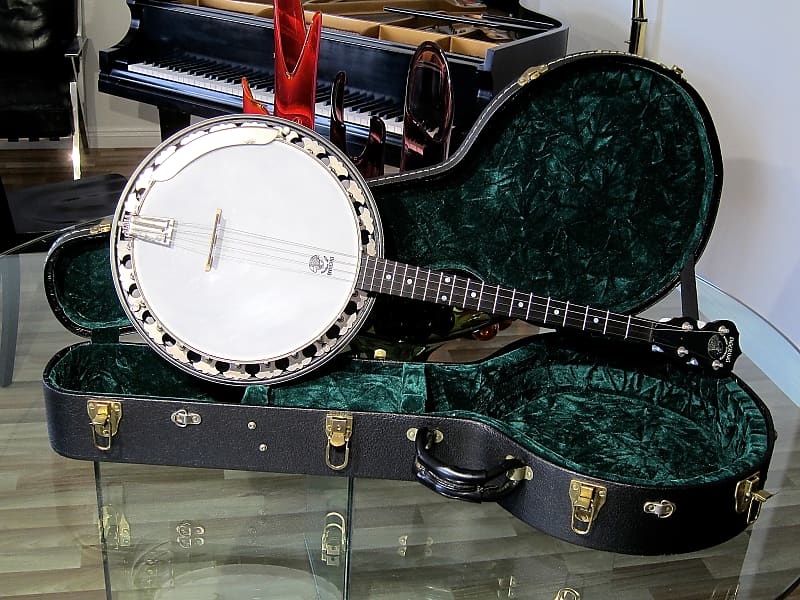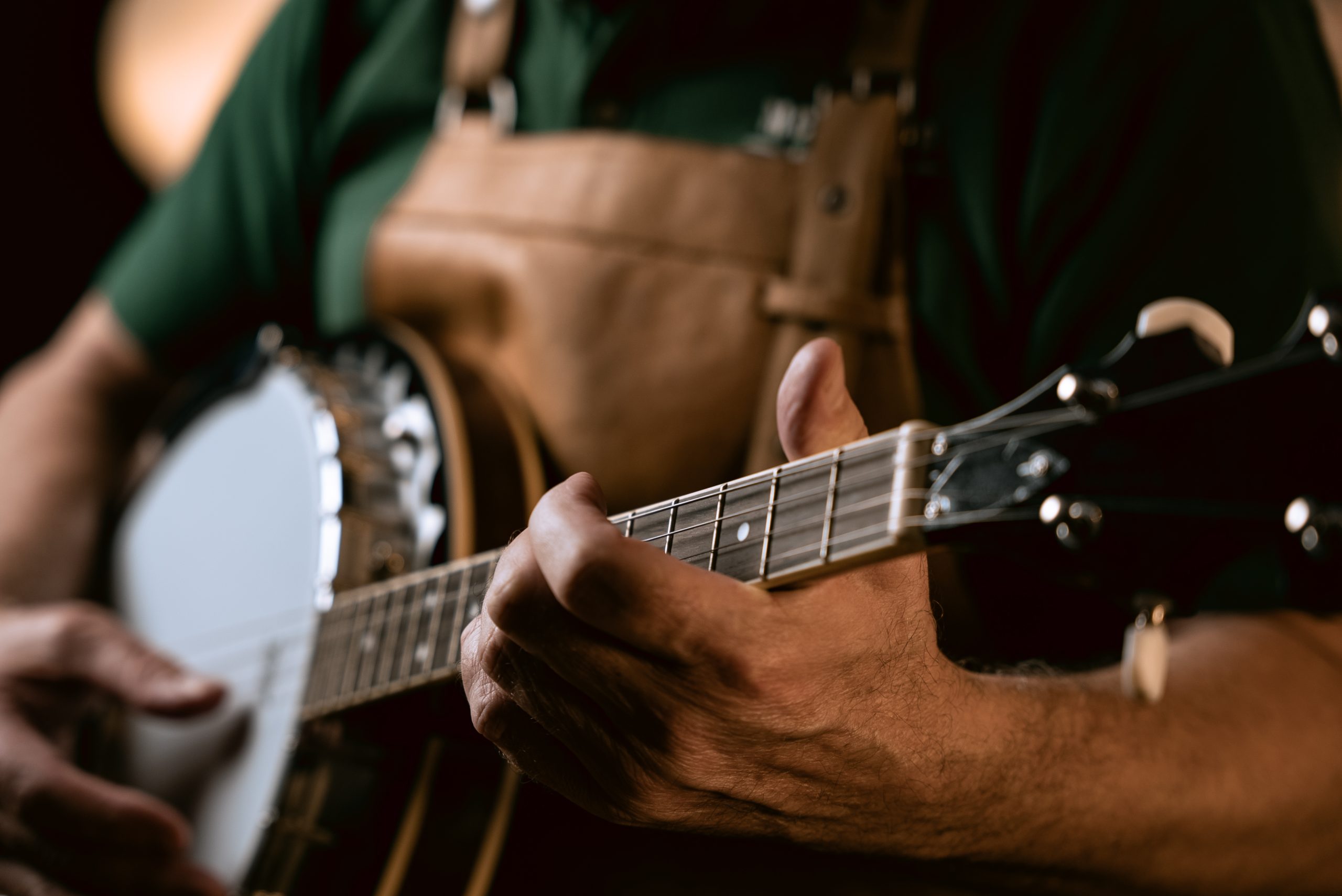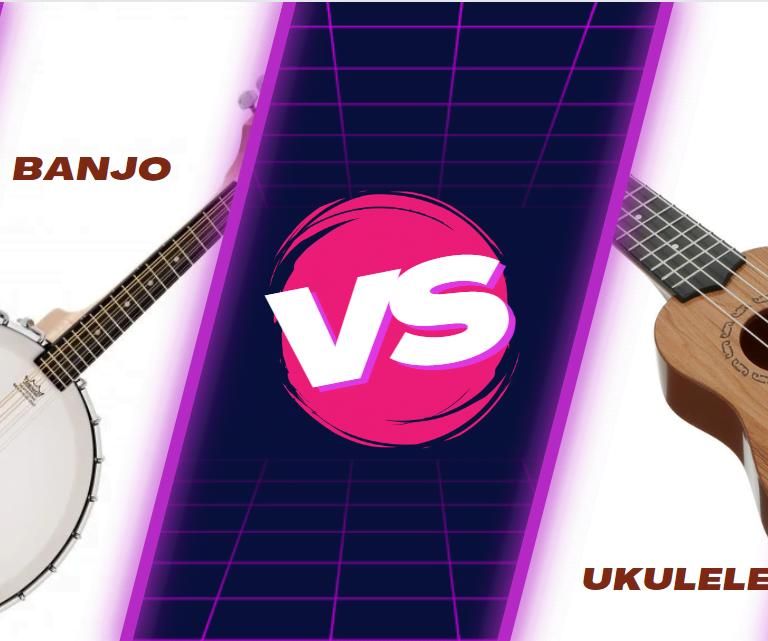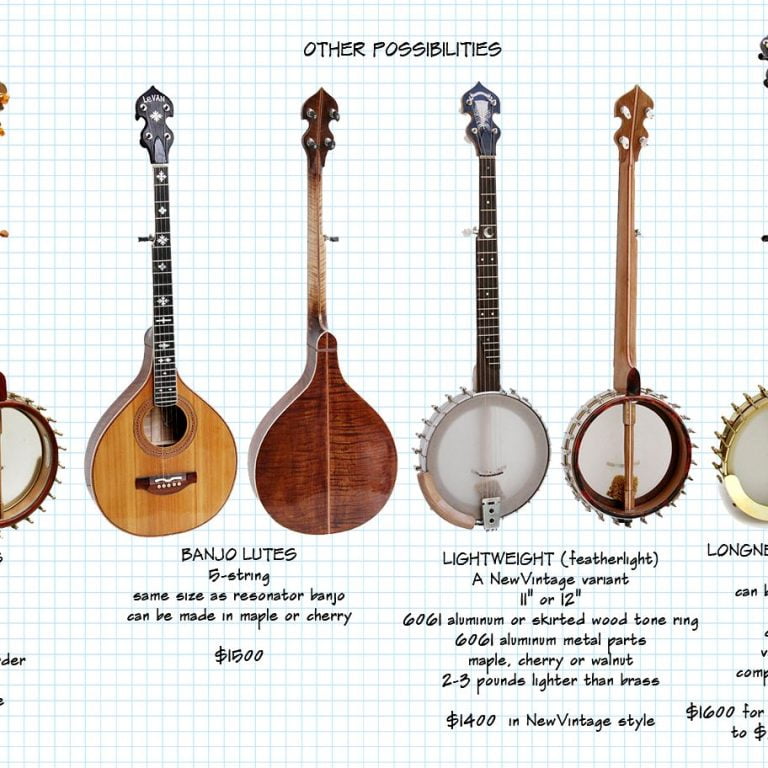When choosing between a 4 string vs 5 string banjo, consider the difference in the number of strings and the tuning style. The 4-string banjo is typically tuned like a violin, while the 5-string banjo is tuned to an open G chord.
If you’re looking to explore different musical styles, the choice between a 4-string and a 5-string banjo can significantly impact your playing experience. Both instruments have unique characteristics that cater to diverse musical preferences and playing techniques. Understanding the differences in their construction, tuning, and sound can help you make an informed decision that aligns with your musical goals.
Whether you’re drawn to traditional folk or contemporary bluegrass music, selecting the right banjo can enhance your playing journey. Let’s delve into the distinctions between the 4-string and 5-string banjos to guide your decision-making process.
The Origin Of The Banjo
Banjo, an instrument with roots that snake deep into the annals of history, carries in it the essence and rhythm of an era lost in time. The origin of the banjo traces back to the West African string instrument, known as the akonting or the jeli ngoni, which found its way to the Americas through the transatlantic slave trade.
Brief History Of The Banjo
The banjo’s evolution from its West African origins to its profound influence in traditional and contemporary music reflects a remarkable journey intertwined with cultural exchange and innovation.
Introduction To The Different Types Of Banjos
The banjo gradually transformed into different variants, with the 4-string and 5-string banjos emerging as the predominant types. Each type possesses its distinct qualities, giving rise to diverse playing styles and tonal possibilities.
Anatomy And Tuning
When it comes to choosing between a 4-string and a 5-string banjo, understanding their anatomy and tuning is crucial. Both types of banjos have distinct characteristics that affect their sound and playability. Exploring the components and tuning of each will help you make an informed decision based on your playing style and musical preferences.
Exploring The Components Of A Banjo
A banjo consists of several components that contribute to its unique sound and playability. The following table outlines the key components of a banjo:
| Component | Description |
|---|---|
| Neck | The long, slender portion of the banjo that holds the fretboard and tuning pegs. |
| Pot Assembly | Includes the rim, tension hoop, head, tone ring, and flange, which collectively produce the banjo’s sound. |
| Bridge | The part that supports the strings over the head, transmitting the vibrations to the banjo’s body. |
| Resonator (optional) | An attachment on the back of the banjo that projects the sound forward. |
Understanding The Tuning Of 4-string And 5-string Banjos
The tuning of a banjo refers to the specific pitches assigned to each string. Both 4-string and 5-string banjos have unique tuning configurations that contribute to their distinct sound and playability.
Below are the standard tuning configurations for 4-string and 5-string banjos:
- 4-String Banjo Tuning:
- G
- D
- G
- B
- 5-String Banjo Tuning:
- G
- D
- G
- B
- D (short drone string)
The tuning of each banjo type significantly influences the range of notes and chords that can be played, as well as the overall tonal characteristics.
Playing Style And Techniques
Contrasting Playing Styles For 4-string And 5-string Banjos
When it comes to playing style, the difference between 4-string and 5-string banjos is a key factor for banjo enthusiasts. The distinct sound and playing techniques of each type cater to different musical genres and playing preferences.
Distinguishing The Techniques Used For Each Type
4-string and 5-string banjos require different techniques, contributing to the unique sounds they produce. Understanding the specific techniques associated with each type is essential for banjo players aiming to master their craft and excel in their musical pursuits.
Music Genres And Versatility
When it comes to choosing the right banjo for your musical endeavors, understanding the music genres each type is suited for and their versatility is essential. Whether you opt for a 4-string or 5-string banjo, knowing their strengths in various music genres and their overall versatility will help you make an informed decision on which instrument best suits your musical preferences and style.
Discussing The Genres Each Banjo Type Is Suited For
- Well-suited for jazz, Dixieland, and traditional Irish music
- Delivers a bright, lively tone that fits seamlessly in these genres
- Popularized by jazz legends like Eddie Peabody and Joe Morley
- Ideal for bluegrass, folk, country, and Americana music
- The signature drone string enhances the instrument’s resonance and creates a distinct twang synonymous with these genres
- Played by iconic musicians such as Earl Scruggs and Bela Fleck
Highlighting The Versatility Of Both 4-string And 5-string Banjos
Both 4-string and 5-string banjos offer remarkable versatility:
- They can adapt to various musical styles, making them suitable for solo performances, group jam sessions, and studio recordings
- Varied tunings allow for versatility in playing different musical genres
- Modern musicians utilize both banjo types in innovative ways, crossing traditional genre boundaries
Sound And Tone
When considering the difference between 4 string and 5 string banjos, the sound and tone are essential factors to examine. The number of strings on a banjo directly influences its sound characteristics, creating distinct tones that cater to different musical styles and preferences.
Analyzing The Sound Differences Between The Two Banjo Types
Each banjo type offers its own unique sound profile. A 4-string banjo often produces a brighter and more twangy sound, making it well-suited for styles like jazz and Dixieland. On the other hand, a 5-string banjo typically delivers a fuller and more resonant tone, making it a popular choice for bluegrass, folk, and country music.
Exploring How The String Count Impacts The Tone
The string count plays a pivotal role in shaping the banjo’s overall tone. With one less string, the 4-string banjo tends to produce more distinct notes with a higher pitch, enhancing its ability to cut through a mix. Contrarily, the 5-string banjo’s additional bass string contributes to a deeper and richer sound, enabling a broader range of melodic possibilities and chord variations.
Pros And Cons
Pros and Cons of 4-String vs 5-String Banjo
Outlining The Advantages Of Playing A 4-string Banjo
When it comes to playing a 4-string banjo, there are several distinct advantages that make it a preferred choice for many musicians.
- Easy to learn and play for beginners due to the simplified chord structure.
- Lighter and more compact compared to the 5-string banjo, making it portable and convenient for travel.
- Produces a unique, mellow tone that is well-suited for jazz, classical, and old-time music genres.
- Offers versatility for strumming and fingerpicking styles, allowing for a wide range of musical expression.
Evaluating The Benefits Of A 5-string Banjo
When evaluating the benefits of a 5-string banjo, it becomes clear that this instrument has its own set of advantages that appeal to players across different musical genres.
- Greater flexibility in playing various musical styles, including bluegrass, folk, country, and more, owing to the additional fifth string.
- Enhanced melodic capabilities with the drone string, enabling players to create intricate and intricate melodic patterns.
- Wider range of tonal possibilities and expressive techniques, such as the characteristic “roll” patterns and rapid picking.
- Promotes a deeper understanding of traditional banjo playing techniques, which can enrich a musician’s overall skillset.
Formal Vs Informal Settings
When it comes to choosing between a 4-string and a 5-string banjo for a formal or informal setting, it’s important to understand the nuances of each instrument. Both banjo types have their own unique characteristics that make them suitable for different performance settings. Let’s explore how each banjo type is commonly used and their suitability for various performance settings.
Differentiating When Each Banjo Type Is Commonly Used
- Commonly used in traditional jazz and Dixieland music
- Creates a classic and mellow sound
- Well-suited for solo performances and small ensembles
- Popular in bluegrass, folk, and country music
- Known for its bright and punchy tone
- Preferred in larger ensembles and jam sessions
Exploring The Suitability Of Each Type For Various Performance Settings
| Setting | Suitability |
|---|---|
| Concert Halls | Both 4-string and 5-string banjos are suitable, depending on the genre of music being performed |
| Classical Music Performances | 4-string banjo is more commonly used for its refined and melodic sound |
| Formal Events | 5-string banjo can add a lively and spirited touch to formal gatherings |
| Setting | Suitability |
|---|---|
| Outdoor Festivals | Both banjo types are versatile and can adapt to the relaxed atmosphere of outdoor events |
| Bluegrass Jam Sessions | 5-string banjo shines in the casual and collaborative environment of jam sessions |
| Acoustic Performances | 4-string banjo offers a soothing and intimate ambiance for acoustic performances |

Credit: banjo
Frequently Asked Questions For 4 String Vs 5 String Banjo
What Is The Difference Between A 4 String And A 5 String Banjo?
The main difference lies in the number of strings and the tuning. A 4-string banjo is typically used in jazz and is tuned like a violin, while a 5-string banjo is commonly associated with bluegrass music and has an additional short fifth string.
Which Banjo Is Better For A Beginner: 4 String Or 5 String?
For beginners, a 4-string banjo might be easier to learn due to its simpler tuning and smaller neck. However, the choice ultimately depends on the musical style you want to play. Both types can be suitable for beginners with the right guidance and practice.
What Kind Of Music Is Typically Played With A 4-string Banjo?
The 4-string banjo, also known as the tenor banjo, is often used in jazz, Irish traditional music, and early 20th-century popular music. Its unique tuning and sound make it a popular choice in these genres, offering a vibrant and lively accompaniment to various musical styles.
In choosing between a 4-string and 5-string banjo, it ultimately comes down to personal preference and playing style. Both types offer their own unique sound and characteristics, catering to different musical genres and player skill levels. Understanding the differences and considering your own musical goals will help you make the best choice for your individual needs.
To check our more blogs Click Here




